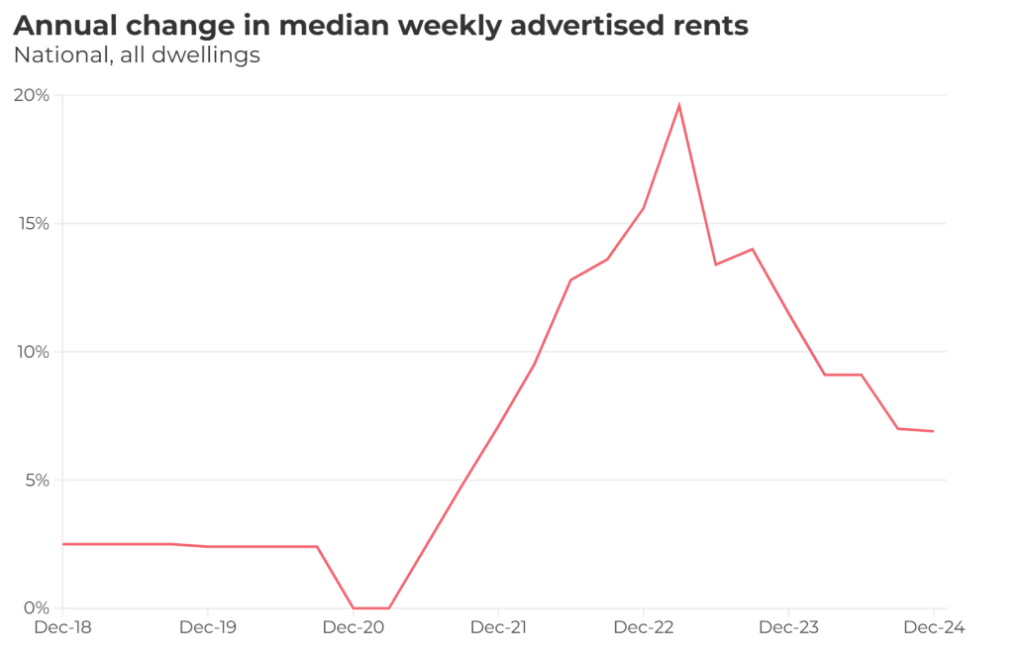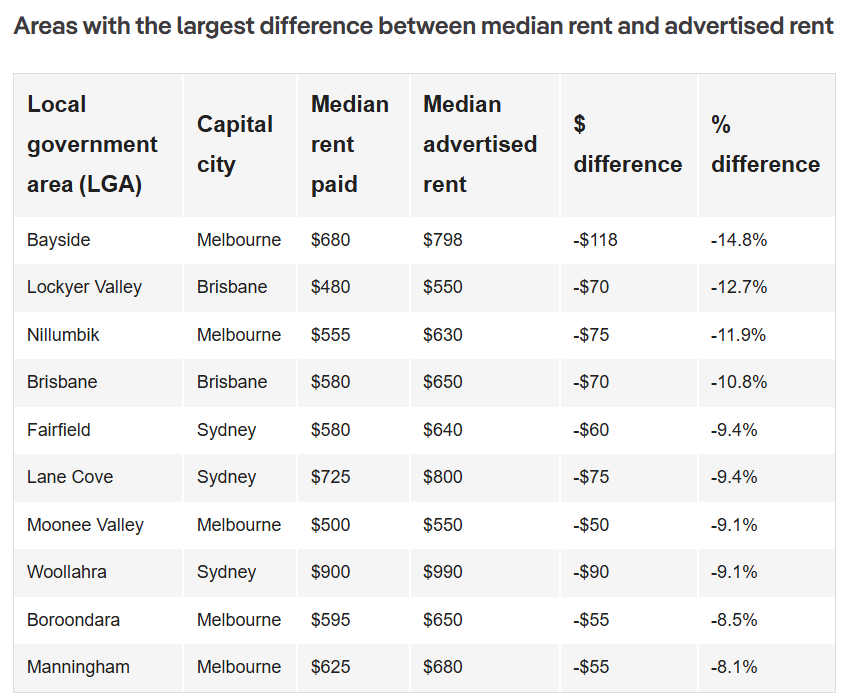Smart Renters Discover Huge Savings as the Rental Market Changes
Renters are finding themselves in a stronger negotiation position as rental markets throughout Australia change because there are more rental properties available. With more inexpensive options becoming accessible and rent price rise decreasing, the market is turning in favor of tenants after several years of limited supply and rising rental prices. Specifically, smart tenants have the opportunity to obtain substantial savings on rental rates when compared to published rates in specific neighborhoods of large cities.
1. A rise in rental listings and a stabilization of rent prices
In 2023 and 2024, the number of new rental listings as well as the total number of rental listings increased significantly. In comparison to December 2023, the number of new listings rose by 7.0%, but the overall number of listings jumped by a more significant 14.6%, according to PropTrack’s most recent rental report. Due to the increased number of rental properties accessible, tenants now have more options, which has increased competition and given them more negotiation leverage over lease terms and rental pricing.

Rent price growth has also slowed as a result of the increase in rental stock. Although there have been significant annual rises in rental costs in the past (7.1% in 2021, 15.5% in 2022, and 11.5% in 2023), this growth has decreased to just 6.9% from the year before. In addition to giving renters more options and increasing competition for landlords, the rise in listings has also eased pressure on rental prices.
2. Significant Rent Reductions in Certain Locations
- Renters are taking advantage of the increased rental availability by negotiating rates that are significantly lower than the median rent that is being posted. Tenants have been able to negotiate rent costs that are much lower than what is stated in regions where the rental stock has been very high.
- The biggest discrepancies between stated and real rent have been observed in Melbourne by tenants in the Bayside and Nillumbik councils, where tenants often receive discounts of 15% and 13%, respectively. In a similar vein, tenants in Brisbane’s Lockyer Valley municipality have successfully negotiated a price reduction of 12% below the listed asking price. These significant savings show that renters can benefit from the present market conditions in locations with a high number of listings.
- Apart from these councils, tenants have also been successful in negotiating reduced rental prices in several Sydney neighborhoods. For instance, renters have been able to negotiate weekly rent reductions of $60 to $75 in the Fairfield and Lane Cove local government areas (LGAs). Because houses in these areas stay on the market for extended periods, tenants benefit from a high rental turnover rate, which gives them negotiating power.
3. A more balanced marketplace and shifting tenant habits
- Various reasons have contributed to the increase of rental listings and the ensuing reductions. The demand for rental houses has decreased as a result of slower population growth, but the increase in shared living arrangements and the number of renters entering the housing market has also eased the pressure on the rental supply.
- A shift in renters’ preferences toward buying properties is indicated by the rise in first-home buyer loans, which has helped to keep rental costs moderate.
- Additionally, a higher rental turnover rate indicates that renters are becoming more and more willing to relocate houses. Renters have more negotiating leverage as more properties go unleased for longer periods of time. All renters gain from this move toward a more balanced market, but those who live in certain locations are better positioned to find offers that are less than the median listed price.

Conclusion
The rental market in Australia is changing; as there are more rental listings, there is less rivalry and more room for tenants to get deals. Renters are successfully negotiating rentals that are far lower than the listed rates in some places; in Melbourne and Brisbane, they are saving up to 15%, and in other sections of Sydney, they are saving $60 to $75 each week.
A more advantageous climate for tenants has resulted from a higher turnover rate, a rise in rental stock, and shifting renter behaviors, even as the growth in rent prices has moderated overall. Renters are well-positioned to take advantage of these market conditions and locate more reasonably priced rental options in areas with a high number of listings.As long as these patterns persist, renters nationwide might keep discovering ways to cut costs and get better offers in the rental market.
